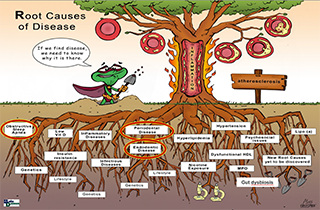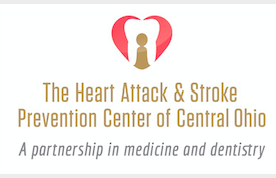Dr. McGlennen: There is consensus within the medical and dental community that periodontal bacteria contribute to the initiation, progression and prognosis of cardiovascular disease. From key studies, including prospective, retrospective and even meta-analysis studies, persons with untreated periodontal infections have up to a 20% increase in their risk of coronary vascular disease.1 The multiple of risk for stroke (1.74-2.85 fold) and peripheral vascular disease (1.41-2.27 fold) is equal or greater.1 More specifically, the risk of a first myocardial infarction is associated with periodontal disease (OR of 1.49) even after adjustment for history of smoking, obesity, diabetes and selected socioeconomic factors.2 Equally important is the concern for specific bacteria that are a basis for this risk, including A.a., P.g., T.f., T.d., F.n. and P.i..3-7 Specifically, F.n. carries a series of virulence factors that can contribute to inflammation of the arterial wall.8 In the interest of preventing heart and vascular disease, testing your patients for which types and what levels of these dangerous bacteria are present will provide them better care.
Many dental and medical practitioners are incorporating an overall health approach. We have invited one of those teams, Heart Attack and Stroke Prevention Center of Central Ohio, to share how they speak to patients when communicating the link between periodontal pathogens and cardiovascular disease.
Barb McClatchie DDS: First, let me set the stage for our patient experience. Our practice, Complete Health Dentistry of Columbus, is within the Heart Attack and Stroke Prevention Center of Central Ohio (HASPC). It is the first center of its kind where medical and dental professionals work in synergy to co-manage patients from both aspects within the same practice. If you start by seeing Dr. Goulder (medical side) and have a carotid intima-media thickness (CIMT) scan, and the results state that you have advanced vascular age due to inflammation, then Dr. Goulder would strongly recommend you have an “Initial Assessment” to see how at risk you are for an unexpected heart attack or ischemic stroke. This assessment includes both medical and dental exams and testing: inflammatory panel, genetic testing, cone-beam CT scan (CBCT) looking for silent sources of inflammation, as well as MyPerioPath®.
The dental component performed by Dr. Barb McClatchie and team will have significant differences to what you have experienced in other dental exams. During the first visit, you are provided with a full dental assessment, CBCT looking for silent sources of inflammation, a saliva test, and periodontal evaluation as set forth by DHEmethod. In addition, as Bale/Doneen providers, each one of our patients receives an explanation of the risks of dental infections, as related to inflammation on the root cause tree. See image below.
Visual aids and clear communication are key. While the patient is holding a sample MyPerioPath® report, we say to our patients, “The problem is that there may be specific bacteria in your mouth that can be putting your body at risk. The consequence of not finding out if you harbor these bacteria is that they can silently be contributing to vascular disease. So, the best solution is to start with a simple saliva test to see if you not only have these bacteria, but how much, so we can specifically treat you and reduce your risk. What questions do you have for me about saliva testing?”

References
1. Meurman JH, Sanz M, Janket SJ. Oral health, atherosclerosis, and cardiovascular disease. Crit Rev Oral Biol Med 2004;15:403-13.
2. Ryden L, Buhlin K, Ekstrand E, et al. Periodontitis Increases the Risk of a First Myocardial Infarction: A Report From the PAROKRANK Study. Circulation 2016;133:576-83.
3. Pucar A, Milasin J, Lekovic V, et al. Correlation between atherosclerosis and periodontal putative pathogenic bacterial infections in coronary and internal mammary arteries. J Periodontol 2007;78:677-82.
4. Radwan-Oczko M, Jaworski A, Dus I, Plonek T, Szulc M, Kustrzycki W. Porphyromonas gingivalis in periodontal pockets and heart valves. Virulence 2014;5:575-80.
5. Range H, Labreuche J, Louedec L, et al. Periodontal bacteria in human carotid atherothrombosis as a potential trigger for neutrophil activation. Atherosclerosis 2014;236:448-55.
6. Rath SK, Mukherjee M, Kaushik R, Sen S, Kumar M. Periodontal pathogens in atheromatous plaque. Indian J Pathol Microbiol 2014;57:259-64.
7. Bale BF, Doneen AL, Vigerust DJ. High-risk periodontal pathogens contribute to the pathogenesis of atherosclerosis. Postgrad Med J 2017;93:215-20.
8. Liljestrand JM, Paju S, Pietiainen M, et al. Immunologic burden links periodontitis to acute coronary syndrome. Atherosclerosis 2018;268:177-84.
For more information on how to become an OralDNA Provider – scan HERE: 

